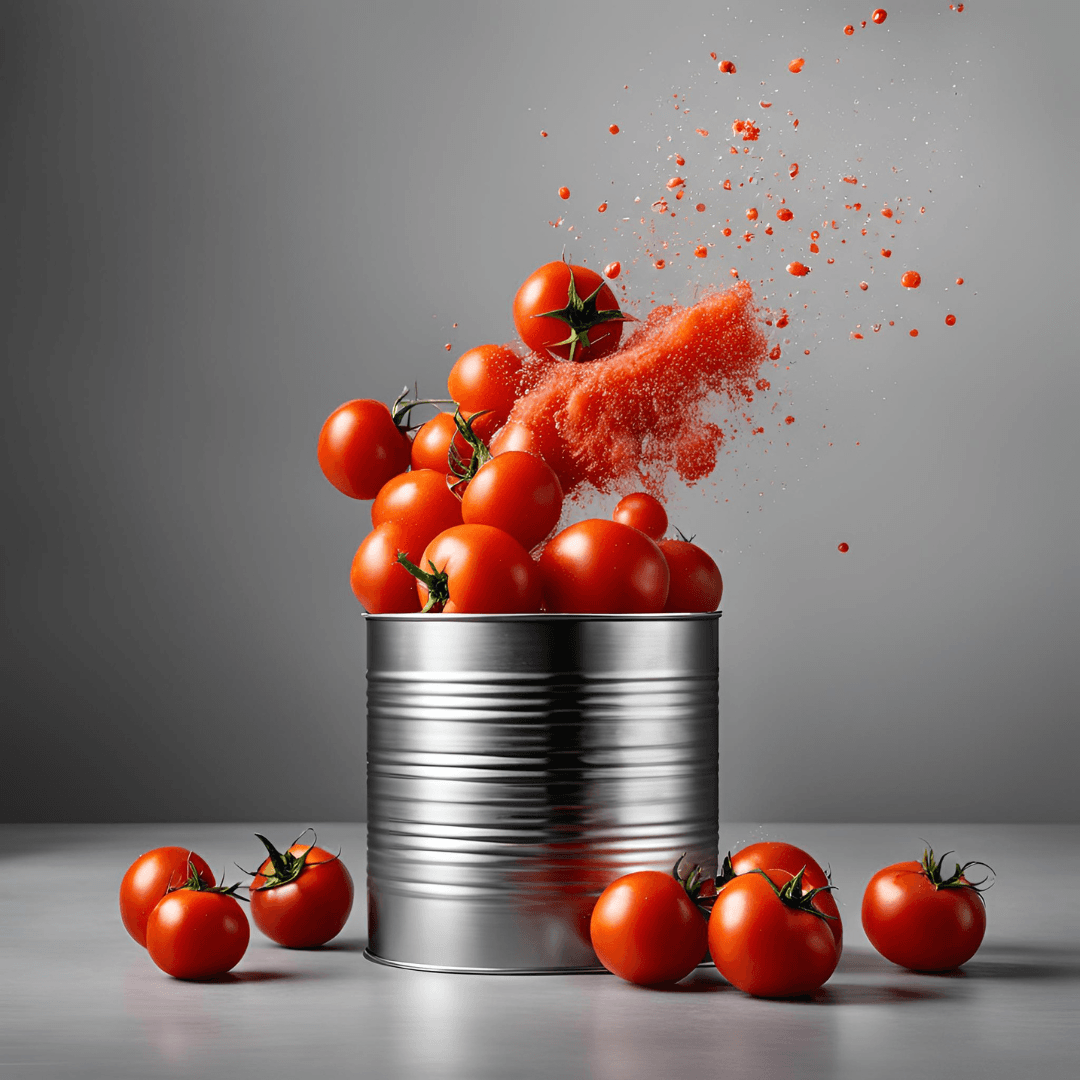Understanding BRIX Levels in Canned Tomatoes: A Key Metric for Food Sourcing
Published: 3/24/2025|Updated: 4/3/2025
Written byHans FurusethReviewed byKim Alvarstein
When sourcing canned tomatoes, Brix levels are a game-changer in determining the quality and suitability. Brix measures the sugar content in a liquid solution, offering insight into sweetness, ripeness, and concentration. Understanding Brix levels helps ensure consistency in production, quality assurance, and cost efficiency. Discover how factors like tomato variety, growing conditions, and processing techniques impact Brix levels and learn to select products that meet your needs. Elevate your sourcing strategy and deliver superior quality with every batch.

200+ buyers trust Torg for sourcing

What Are BRIX Levels?

For procurement and sourcing specialists, understanding BRIX levels is an essential part of evaluating the quality and suitability of canned tomatoes for various applications. BRIX levels measure the sugar content in a liquid solution, and in the case of tomatoes, they provide critical insight into sweetness, ripeness, and concentration. Whether you’re sourcing for pasta sauces, soups, or ready-to-eat meals, knowing how to interpret BRIX levels can significantly impact product quality and consistency.
The BRIX scale measures the percentage of soluble solids—primarily sugars—in a liquid solution. For canned tomatoes, BRIX levels typically range from 4 to 8 degrees, depending on the type of product and its intended use. The higher the BRIX level, the more concentrated and flavorful the tomato product.
For example:
The BRIX scale measures the percentage of soluble solids—primarily sugars—in a liquid solution. For canned tomatoes, BRIX levels typically range from 4 to 8 degrees, depending on the type of product and its intended use. The higher the BRIX level, the more concentrated and flavorful the tomato product.
For example:
- Tomato Juice: Typically has a BRIX level of 4 to 5.
- Diced or Crushed Tomatoes: Usually fall in the range of 5 to 6.
- Tomato Paste: Highly concentrated, with BRIX levels between 24 and 30.
Why BRIX Levels Matter in Canned Tomatoes

1. Quality Assurance
BRIX levels serve as a reliable metric for assessing the ripeness and quality of the tomatoes used in canned products. Higher BRIX levels indicate that the tomatoes were harvested at peak ripeness, ensuring a naturally sweeter and richer flavor. Tomatoes with lower BRIX levels may result in products with a more watery or bland taste, potentially compromising the final dish.
2. Consistency in Production
For food manufacturers, consistency is key. Variations in BRIX levels can lead to fluctuations in taste and texture, which are undesirable in mass production. For instance, a pasta sauce manufacturer might require canned tomatoes with a BRIX level of 6 to 6.5 to ensure consistent flavor and thickness across batches. Without standardized BRIX levels, achieving uniformity becomes challenging.
3. Cost Efficiency
Higher BRIX levels often translate to reduced cooking times and better yield. For example, tomato paste with a BRIX level of 28 allows manufacturers to achieve desired concentrations faster, saving on energy costs. Additionally, products with higher BRIX levels often require fewer additives or sweeteners, further reducing production expenses.
Industry Standards and BRIX Requirements
BRIX levels are not just a quality indicator; they’re often mandated by industry standards and regulations. For instance, the USDA specifies minimum BRIX levels for various canned tomato products:
- Tomato Juice: Minimum of 5 BRIX.
- Canned Diced Tomatoes: Minimum of 4.5 BRIX.
- Tomato Paste: Minimum of 24 BRIX.
Factors Influencing BRIX Levels

Several factors affect the BRIX levels of canned tomatoes, including:
Different tomato varieties have naturally varying sugar content. For example, Roma tomatoes, commonly used for processing, tend to have higher BRIX levels compared to other varieties like Beefsteak or Cherry tomatoes.
Environmental factors such as soil quality, temperature, and sunlight significantly influence sugar accumulation in tomatoes. Tomatoes grown in regions with ample sunlight, such as California or Italy, often exhibit higher BRIX levels due to prolonged exposure to sunlight, which enhances photosynthesis.
Harvesting at peak ripeness ensures maximum sugar content. Overripe or underripe tomatoes can result in lower BRIX levels, impacting the flavor and consistency of canned products.
How tomatoes are processed can also affect BRIX levels. Concentrated products like tomato paste undergo evaporation to remove water, thereby increasing the BRIX level.
1. Variety of Tomato
Different tomato varieties have naturally varying sugar content. For example, Roma tomatoes, commonly used for processing, tend to have higher BRIX levels compared to other varieties like Beefsteak or Cherry tomatoes.
2. Growing Conditions
Environmental factors such as soil quality, temperature, and sunlight significantly influence sugar accumulation in tomatoes. Tomatoes grown in regions with ample sunlight, such as California or Italy, often exhibit higher BRIX levels due to prolonged exposure to sunlight, which enhances photosynthesis.
3. Harvesting Practices
Harvesting at peak ripeness ensures maximum sugar content. Overripe or underripe tomatoes can result in lower BRIX levels, impacting the flavor and consistency of canned products.
4. Processing Techniques
How tomatoes are processed can also affect BRIX levels. Concentrated products like tomato paste undergo evaporation to remove water, thereby increasing the BRIX level.
Global Market Insights: BRIX Levels and Consumer Preferences

In recent years, there has been a growing demand for canned tomato products with higher BRIX levels, driven by consumer preferences for richer, more flavorful foods. According to a 2023 report by Research and Markets, the global canned tomato market is projected to rise at a CAGR of 4.2% between 2023 and 2028, reaching a value of $13.6 billion by the end of the period. This growth underscores the importance of sourcing high-quality products to meet evolving consumer expectations.
Regional BRIX Trends
- United States: With a focus on convenience and quality, American manufacturers often demand higher BRIX levels to cater to premium product lines.
- Europe: In regions like Italy and Spain, where tomatoes are a culinary staple, higher BRIX levels are synonymous with authenticity and superior taste.
- Asia-Pacific: Emerging markets like India and China are showing increased interest in higher BRIX canned products for use in ready-to-eat meals and sauces.
Tips for Sourcing

1. Understand Your Product Requirements
Identify the BRIX level most suitable for your application. For example:
- Soups may require lower BRIX levels for a lighter consistency.
- Sauces and purees benefit from higher BRIX levels for enhanced flavor and thickness.
2. Partner with Reliable Suppliers
Work with suppliers who prioritize quality and adhere to BRIX standards. Request lab reports or certifications to verify BRIX levels in their products.
3. Conduct Regular Testing
Invest in a refractometer to measure BRIX levels in incoming shipments. This ensures the product meets your specifications and maintains consistency.
4. Consider Sustainability
Opt for suppliers who use sustainable farming and processing methods. Higher BRIX levels often result from better agricultural practices, which can align with your company’s sustainability goals.
BRIX by BRIX…

BRIX levels are more than just a number; they’re a critical metric for ensuring the quality, consistency, and efficiency of canned tomato products. For food sourcing professionals, understanding and leveraging BRIX levels can lead to better procurement decisions, improved product performance, and greater customer satisfaction. By staying informed about industry standards, market trends, and supplier capabilities, you can ensure that your sourcing strategies align with both consumer demands and business objectives.
Request a Bulk Order Quote
Simple ordering, transparent pricing, delivered straight to your door

